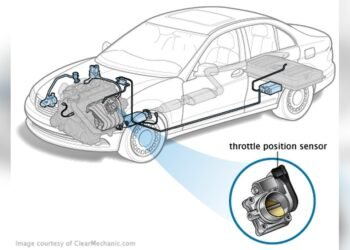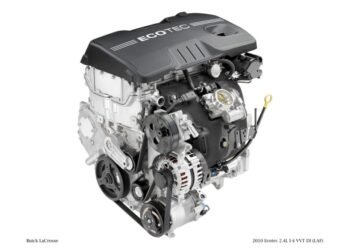To start a diesel truck that’s been sitting, first inspect the battery and fuel system. Ensure the battery is charged and the fuel isn’t degraded.
Starting a diesel truck after a period of inactivity requires a thorough check and potential maintenance. Before attempting to turn the ignition, the vehicle’s vital components must be evaluated for operational readiness. This includes assessing the engine oil, examining for any signs of corrosion, and ensuring that the fuel filter and lines are clear of blockages.
A well-maintained diesel engine can typically withstand periods of disuse, but the quality of the fuel and the health of the battery are critical to a successful start. Regular maintenance and proper storage practices can prevent many of the issues associated with a vehicle sitting unused, making the process of starting it up again smoother and more reliable.

Credit: m.youtube.com
Introduction To Diesel Truck Revival
Bringing a diesel truck back to life requires know-how. Trucks that sit idle can face issues. Proper steps ensure a smooth start. This guide helps truck owners restart their diesel vehicles with ease.
Importance Of Regular Maintenance
Maintenance keeps trucks reliable. Neglect can lead to costly repairs. A well-maintained truck starts easier, even after sitting. Regular checks prevent major issues.
- Oil changes protect the engine.
- Fuel system care prevents clogging.
- Battery upkeep ensures power when needed.
Challenges Of Restarting A Dormant Diesel Truck
Idle trucks may face starting difficulties. Batteries drain over time. Fuel can degrade. Seals and hoses may crack. Tackling these challenges is crucial for a successful restart.
| Challenge | Solution |
|---|---|
| Dead battery | Charge or replace |
| Bad fuel | Drain and refill tank |
| Cracked seals | Inspect and replace |
Initial Assessment
Before starting a diesel truck that has been sitting, a thorough initial assessment is crucial. This step ensures the truck is safe and ready to run. Let’s dive into the essential checks.
Visual Inspection
Start with a visual inspection of the truck. Look for any obvious signs of damage or wear. Check the tires for cracks and ensure they are inflated. Look under the truck for any leaks. Open the hood and inspect the engine for any loose or damaged parts. This step helps identify any immediate issues that need fixing.
Checking Fluid Levels
Next, check all fluid levels. This includes engine oil, coolant, brake fluid, and transmission fluid. Use the dipstick to check the engine oil. The oil should be clean and at the full mark. Check the coolant in the radiator; it should be full and free of rust. Ensure the brake fluid is at the correct level in its reservoir. Finally, check the transmission fluid according to the manufacturer’s instructions. Proper fluid levels are key to a smooth start and operation.
- Engine oil: Clean and full
- Coolant: Full and rust-free
- Brake fluid: Correct level
- Transmission fluid: Check as per manufacturer
Completing these checks can prevent many common issues with diesel trucks that have been sitting. It prepares the truck for a successful start and reliable performance.
Battery Care
When a diesel truck sits unused, the battery can lose charge. Battery care is vital before starting the engine. Proper care ensures the truck starts smoothly and prevents damage.
Testing Battery Health
Start by assessing the battery’s condition. Use a multimeter to check voltage. A healthy battery should show around 12.6 volts. Look for corrosion on terminals too. Clean any white, powdery deposits with a wire brush. This maintains a strong connection.
Charging Or Replacing The Battery
If the voltage is low, charge the battery. Use a quality charger and follow the instructions. After charging, test the battery again. If it still won’t hold a charge, consider replacing it. Choose a battery that matches the truck’s specifications for the best performance.

Credit: www.reddit.com
Fuel System Checks
Before starting a diesel truck that has been sitting, a thorough fuel system check is crucial. This system is key to a smooth start. Here’s how to ensure it’s ready.
Draining Old Fuel
Diesel fuel degrades over time. Drain old fuel from the tank first.
- Locate the fuel tank drain plug.
- Place a container beneath it.
- Remove the plug to drain fuel.
Dispose of old fuel properly. Refill the tank with fresh diesel.
Replacing Fuel Filters
A clean fuel filter is essential for engine health. Over time, filters clog and need replacing.
- Turn off the engine.
- Locate the fuel filter.
- Remove the old filter.
- Install a new filter tightly.
Prime the fuel system after changing the filter to remove air.
Oil And Filter Change
Before starting a diesel truck that has been sitting, oil and filter change is crucial. This step ensures the engine runs smoothly. Let’s dive into how to select the right oil and the process of changing oil and filters.
Selecting The Right Oil
Choosing the correct oil is vital for your truck’s engine. Diesel engines require specific oil types to operate efficiently. Look for oils labeled “For Diesel Engines.” These oils handle the engine’s high temperature and pressure well.
- Check the manual: Your truck’s manual lists recommended oil types.
- Consider climate: Oil viscosity should match your area’s climate.
- High-quality brands: Opt for reputable oil brands for better engine protection.
Process Of Changing Oil And Filters
Changing oil and filters involves a few steps. Follow them for a smooth process.
- Prepare your tools: Gather an oil pan, new oil, new filter, and wrench.
- Drain old oil: Remove the oil drain plug. Let all old oil flow out.
- Replace the oil filter: Unscrew the old filter. Screw on the new one.
- Add new oil: Pour in the correct amount of new oil.
- Check for leaks: Start the truck. Look for any oil leaks.
Remember to dispose of the old oil properly. Many auto shops recycle oil.
Air System Maintenance
Maintaining the air system is crucial for diesel trucks, especially those that have been sitting idle. A clean and efficient air system ensures the engine runs smoothly and extends its life. Let’s focus on keeping the air intake clean and inspecting the turbocharger components.
Cleaning Air Intake
Cleaning the air intake is the first step. Dirt and debris can clog the system. This leads to poor engine performance. Follow these steps to clean the air intake:
- Remove the air intake cover.
- Take out the air filter.
- Use a soft brush to clean inside.
- Replace the air filter if it’s dirty.
- Reinstall the air intake cover securely.
Inspecting Turbocharger Components
Next, inspect the turbocharger components. A faulty turbocharger can cause engine issues. Look for signs of wear and damage:
- Check for loose connections.
- Examine the blades for damage.
- Ensure there is no oil leakage.
- Listen for unusual noises when running.
- Consult a professional if you find issues.
Cooling System Care
Proper care of the cooling system is vital for a diesel truck, especially if it has been sitting for a while. Dust, rust, and debris can build up, leading to potential engine overheating. Regular maintenance ensures the truck remains reliable and ready to hit the road.
Flushing The Radiator
Flushing the radiator removes blockages and build-up. This process should be done carefully to avoid damaging the system. It involves draining old coolant, cleaning the radiator with a flush solution, and refilling it with fresh coolant.
Examining Hoses And Connections
Check hoses and connections for any signs of wear or leaks. Cracked or brittle hoses need replacement to prevent future issues. Ensure clamps and fittings are tight to avoid coolant leaks.
- Look for visible damage on hoses.
- Squeeze hoses to test for flexibility.
- Check for secure connections.

Credit: www.reddit.com
Priming The Engine
Priming the engine is a key step. It ensures your diesel truck starts smoothly after sitting idle. This process removes air from the fuel system. Priming helps to deliver diesel to the engine efficiently.
Manual Priming Techniques
Manual priming involves a few simple steps. It’s cost-effective and requires basic tools.
- Locate the primer pump on your diesel engine.
- Open the bleed screw to release trapped air.
- Pump the primer until diesel flows out without air bubbles.
- Tighten the bleed screw securely.
Bleed screws vary by model. Check your truck’s manual for specifics.
Using Electric Primers
Electric primers automate the priming process. They are easy to operate.
- Turn on the electric primer.
- Wait as it cycles fuel through the system.
- Monitor for steady fuel flow.
- Switch off the primer once primed.
Always refer to the electric primer’s manual for the best results.
Starting Procedures
Before starting a diesel truck that has been sitting, follow these steps. This guide helps you start your truck safely. Let’s turn that engine over!
Crank Engine In Short Intervals
Turn the key to start the engine. Do not keep it running long. Try for five seconds max. Then wait. Repeat this process a few times. It helps the oil flow and builds pressure.
Monitoring Engine Performance
After the engine starts, watch the dashboard closely. Look for warning lights. Listen for strange noises. Check if the engine runs smoothly. It tells you if everything is working well.
- Check oil pressure
- Monitor temperature gauges
- Observe fuel delivery
Keep an eye on these signs. It helps ensure your truck runs well after sitting. Safe travels!
Post-start Checks
After starting a diesel truck that has been sitting, it’s crucial to perform post-start checks. These checks ensure the truck runs smoothly. Let’s dive into the essential steps every truck owner should follow.
Checking For Leaks And Abnormal Noises
First, look for any leaks under the truck. Leaks can show problems with the truck. You may see oil, coolant, or fuel on the ground. Each type of leak needs attention. Next, listen for abnormal noises. These sounds can tell you about issues inside the truck. Common sounds include hissing, knocking, and rattling. Find and fix these problems early.
Ensuring Smooth Operation
Ensure the truck’s operation is smooth. Check the dashboard for warning lights. These lights can warn you about potential issues. Test the brakes, steering, and acceleration. Each should work well without issues. If something feels off, it may need a closer look.
- Brakes should not make noise or feel spongy.
- Steering must be responsive without extra effort.
- Acceleration should be smooth without delays.
Performing these checks helps keep your truck in top condition. It ensures safety and reliability on the road. Always address issues early to avoid bigger problems later.
Preventive Measures For The Future
Ensuring your diesel truck remains ready to roar after sitting involves simple, effective steps. Let’s explore how you can keep your truck in peak condition, even during extended periods of inactivity.
Regular Start-up Routine
Starting your diesel truck regularly is key to its longevity. A consistent start-up routine keeps the engine lubricated and identifies potential issues early.
- Weekly start-ups maintain battery charge and circulate fluids.
- Run the engine for at least 15 minutes to reach operating temperature.
- Check for unusual noises or leaks during these sessions.
Long-term Storage Tips
When storing your truck for the long haul, consider these tips to avoid startup issues:
| Tip | Action | Benefit |
|---|---|---|
| Fuel Stabilizer | Add to the tank | Prevents fuel degradation |
| Battery Tender | Connect to the battery | Keeps the battery charged |
| Tire Pressure | Check and inflate | Avoids flat spots |
| Cover | Use a quality cover | Protects from dust and moisture |
These steps will help your diesel truck start smoothly after resting. Regular attention pays off with dependable performance and longevity.
Frequently Asked Questions
How To Start A Diesel Truck After Storage?
Before starting a diesel truck that has been sitting, inspect it for any leaks or damage, charge the battery fully, check fluid levels, and prime the fuel system to ensure safe and successful ignition.
What Steps To Take Before Engine Ignition?
Ensure the diesel fuel hasn’t degraded, replace the fuel filters, check the oil level and quality, and inspect the air filter for blockages before attempting to start the engine.
Can Old Diesel Fuel Prevent Starting?
Old diesel fuel can cause starting issues due to degradation or contamination, which may require draining and replacing with fresh fuel for proper engine function.
Why Won’t My Diesel Truck Start?
A diesel truck may not start if the battery is weak, fuel has degraded, filters are clogged, or due to air in the fuel lines, necessitating a systematic troubleshooting approach.
How To Deal With A Diesel Truck’s Battery Drain?
If a diesel truck’s battery has drained, recharge it using a dedicated charger or replace the battery if it fails to hold a charge, ensuring sufficient power for starting the engine.
Conclusion
Reviving a diesel truck that’s been idle doesn’t have to be daunting. With the right approach, patience, and a bit of elbow grease, you can breathe life into your vehicle. Remember, regular maintenance is key to preventing future issues. So, roll up your sleeves and get ready to enjoy the roar of your diesel truck once again.















